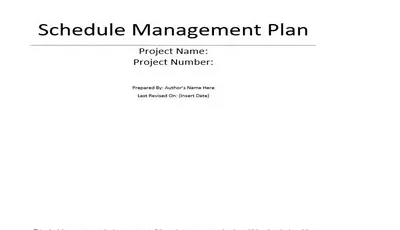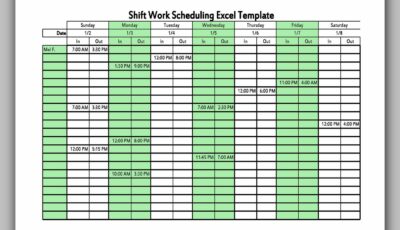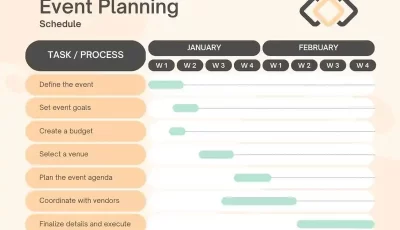A door schedule template is a critical part of any construction project. It traces the specific types and digits of doors needed for a particular building, and it is a critical tool for architects, builders, and contractors. We’ll delve into the components of a door schedule, why it is important, and how to create an effective one.
What is a Door Schedule?
It generally contains details such as the kind of door, location, size, and hardware specifications.
Architects use it builders, to guarantee that all doors are called, manufactured, and installed perfectly.
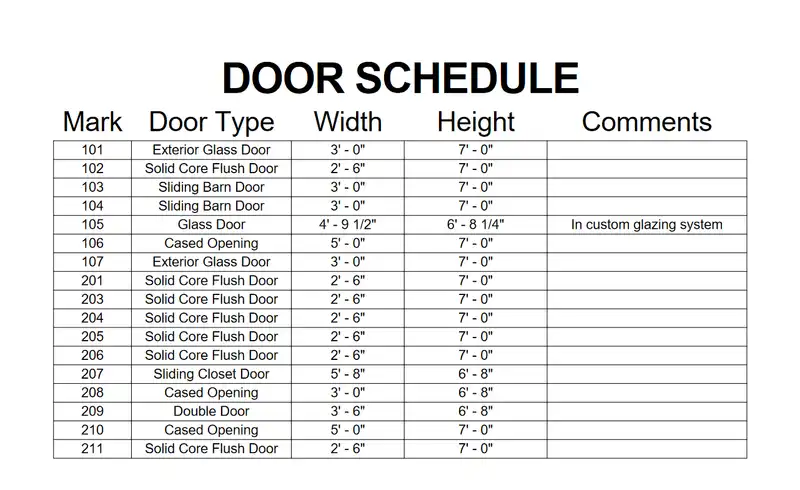
door schedule template pdf by hyperfinearchitecture.com
Why is a Door Schedule Important?
A door schedule is necessary because it helps guarantee that the right doors are requested and installed. It also serves as a concern for builders to guarantee that all door openings are the proper size and that the doors are installed in the right location. By having a door schedule, building professionals can ensure that the building is constructed to meet code requirements and is safe and secure.
How to Create an Effective Door Schedule
The door schedule requires careful planning and attention to detail. Here are some steps you can follow to create a door schedule that is both comprehensive and effective.
- Determine the number of doors needed.
- Specify the type of door per opening.
- Determine the size of each door opening.
- Specify the hardware required for each door.
- Label each door with a unique identifier.
- Include any special requirements, such as fire-rated doors.
- Check the schedule to confirm that all details are correct.
Different Types of Doors in a Door Schedule
Many types of doors can be fitted in a door schedule, including interior, exterior, fire-rated, and special-purpose doors. Choosing the right door type for each opening is essential to guarantee that the building meets code requirements and is safe and secure.
Interior Doors
Interior doors are typically used to separate rooms within a building. They can be solid or hollow-core and are available in various styles, including flush, paneled, and French doors. When creating a door schedule, it’s necessary to specify the type of interior door needed for each opening.
Exterior Doors
Exterior doors are typically used as the main entrance to a building. They are typically solid and available in various styles, including single, double, and French doors. When creating a door schedule, it’s important to specify the type of exterior door required for each opening and ensure that it meets code requirements for energy efficiency and security.
Fire-Rated Doors
Fire-rated doors have been tested and certified to resist the spread of fire for a specified period of time. They are required in many buildings to meet code needs and to guarantee that the building is safe in the event of a fire. When creating a door schedule, it’s essential to specify the type of fire-rated door required for each opening and ensure that it meets code requirements.
Special-Purpose Doors
Special-purpose doors, such as access control or sound-rated door, serve a specific function. When creating a door schedule, it’s important to specify the type of special-purpose door required for each opening and to provide.
Specifying Doors in a Door Schedule
When specifying doors in a door schedule, the following factors should be taken into consideration:
Door type: Specify the type of door required, such as interior, exterior, fire-rated, or security.
Size: Specify the size of the door, including height, width, and thickness.
Material: Specify the material of the door, including wood, metal, or glass.
Finish: Specify the door’s finish, including paint, stain, or clear coat.
Hardware: Specify hardware requirements, such as hinges, locks, and door handles.
Door Schedule Template
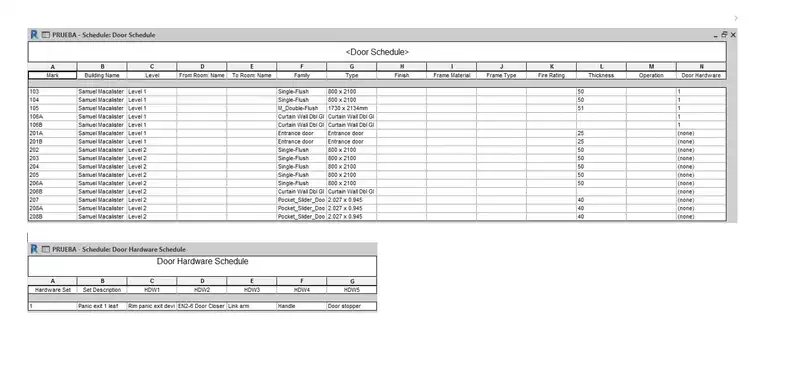
door schedule template by millytxu on forum.dynamobim.com
A door schedule template is a pre-formatted document that provides a structure for listing information about the doors in a building. The template usually includes door number, size, location, type, and hardware fields.
A door schedule template saves time by eliminating the need to create a new document from scratch every time a new project is started. Instead, you can open the template, fill in the necessary information, and you’re good to go.
Tips for using Door Schedule Templates
- Customize the template: Customize the door schedule template to suit the specific needs of your project, including door type, size, materials, and hardware specifications.
- Include all relevant information: Include all relevant information in the door schedule, such as door type, size, location, and hardware specifications.
- Keep it up-to-date: Regularly update the door schedule to reflect any changes in door specifications or locations.
- Ensure accuracy: Double-check the door schedule for accuracy and completeness, paying close attention to any discrepancies or missing information.
- Share with all stakeholders: Share the door schedule with all relevant stakeholders, including architects, contractors, and subcontractors, to ensure everyone has access to the latest information.
- Store electronically: Store electronic copies of the door schedule in a central location that all stakeholders can easily access.
- The reference during construction: Use the door schedule as a reference during construction to ensure that the doors are installed according to specifications.
Creating a Door Schedule Template
Creating a door schedule template is easy and straightforward. All you need is a word processing program, such as Microsoft Word or Google Docs, and a basic understanding of creating tables and adding information.
Here are the steps to create a door schedule template:
- Open a new document in your word processing program.
- Create a table with columns for door number, size, location, type, and hardware.
- Format the table as desired, such as adjusting column widths and adding headings.
- Save the document as a template using a descriptive file name such as “Door Schedule Template.”
Using a Door Schedule Template
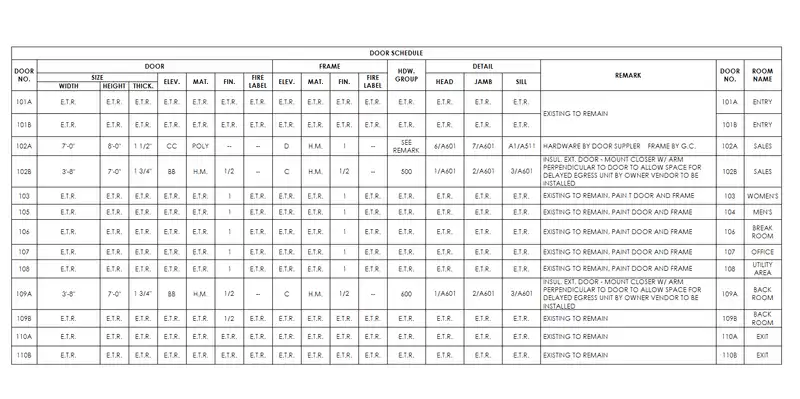
door schedule template pdf by bidroom.net
Using a door schedule template is just as easy as creating one. Open the template, fill in the necessary information, and you’re ready.
Here are the steps to use a door schedule template:
- Open the door schedule template in your word processing program.
- Fill in the door number, size, location, type, and hardware for each door in the building.
- Save the document using a descriptive file named “Project Name Door Schedule.”
Benefits of using Door Schedule Templates
- Consistency: Door schedules provide a consistent format for organizing door information, which can improve the clarity and accuracy of the information.
- Time-saving: Door schedules can be created as templates, allowing for quick and efficient generation of door schedules for multiple projects.
- Improved communication: Door schedules provide a clear and concise representation of door information that can improve communication between design and construction professionals.
- Better organization: Door schedules allow for easy organization of door information and can help prevent miscommunication and errors in construction.
- Better cost management: By having a clear and organized representation of door information, door schedules can help to identify cost-saving opportunities and reduce waste.
Format Door Schedule Templates
Door schedule templates are available in various formats and styles, making it easier to create a door schedule for different construction projects.
Excel spreadsheets: These templates provide a basic layout for entering door information, making them suitable for small projects.
PDF templates: PDF templates are pre-formatted templates that can be easily printed and filled out by hand.
Interactive web-based templates allow for the easy creation and collaboration of door schedules in real time, making them suitable for large and complex projects.
Read Also: 60+ Best Practices Hourly Schedule Template Excel & Word
How the Door Schedule is Used in the Construction Process
A door schedule is used in various stages of the construction process, including design, procurement, and installation. Here is how the door schedule is used in the construction process:
Design Phase
During the design phase, the door schedule is used to specify the type and size of doors required for the project. This information is critical in ensuring that the doors are ordered correctly and delivered on time.
Procurement Phase
Once the door schedule has been completed, it is used during the procurement phase to order the doors and other related materials. The door schedule provides the necessary information to suppliers and manufacturers to ensure that they deliver the right doors to the construction site.
Installation Phase
During the installation phase, the door schedule is used as a reference by the contractors and subcontractors to ensure that all the doors are installed correctly. The door schedule provides details such as the door type, location, size, and hardware, which helps ensure that the installation process goes smoothly.
conclusion
In conclusion, door schedules play a critical role in the success of any construction project. By providing a comprehensive list of all doors, their locations, sizes, and specifications, door schedules assist in guaranteeing that all doors are specified, ordered, and installed perfectly. A door schedule offers numerous benefits, including improved accuracy and completeness of door specifications, avoidance of costly mistakes, better project coordination, improved cost control, and better project management.



